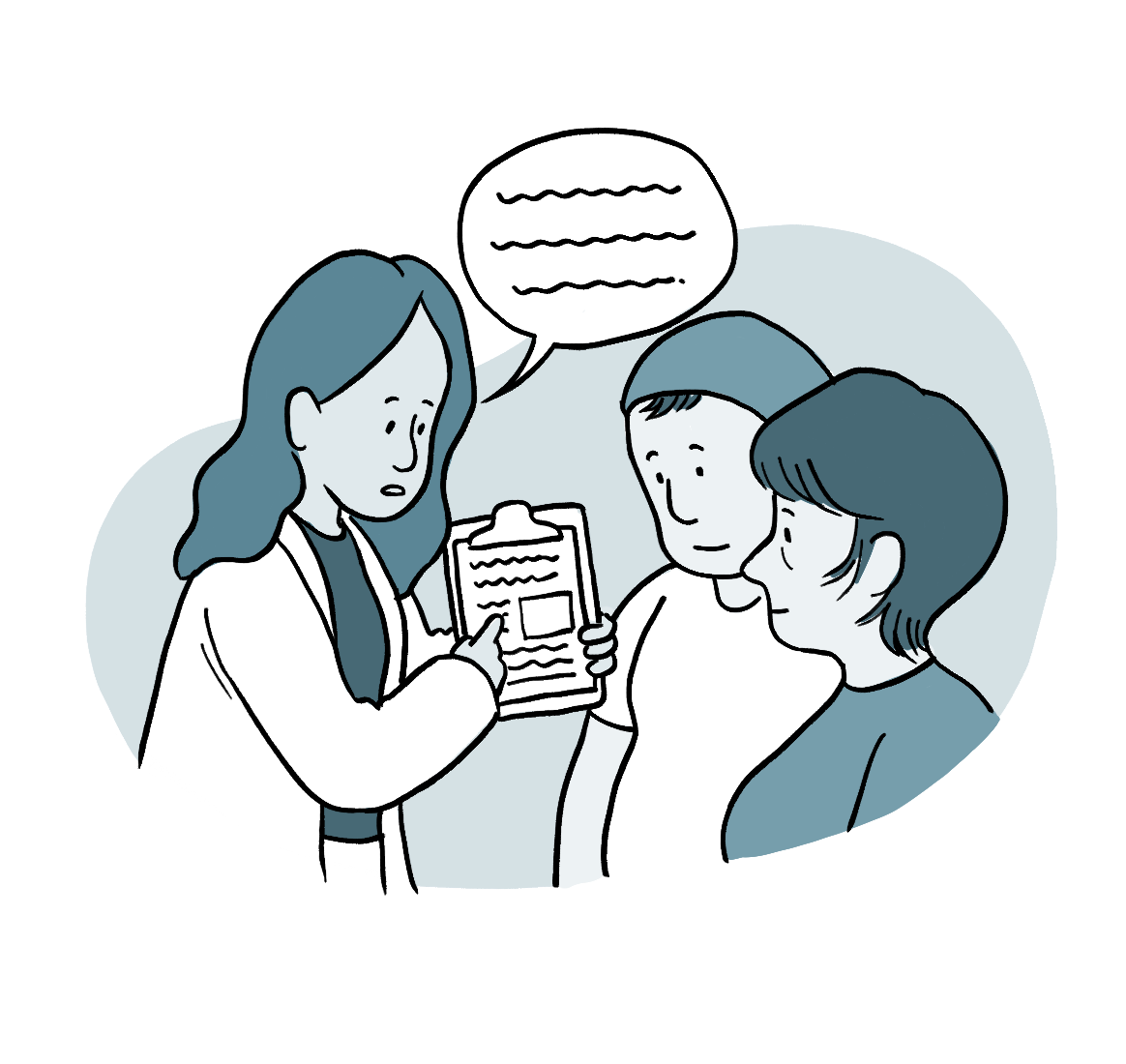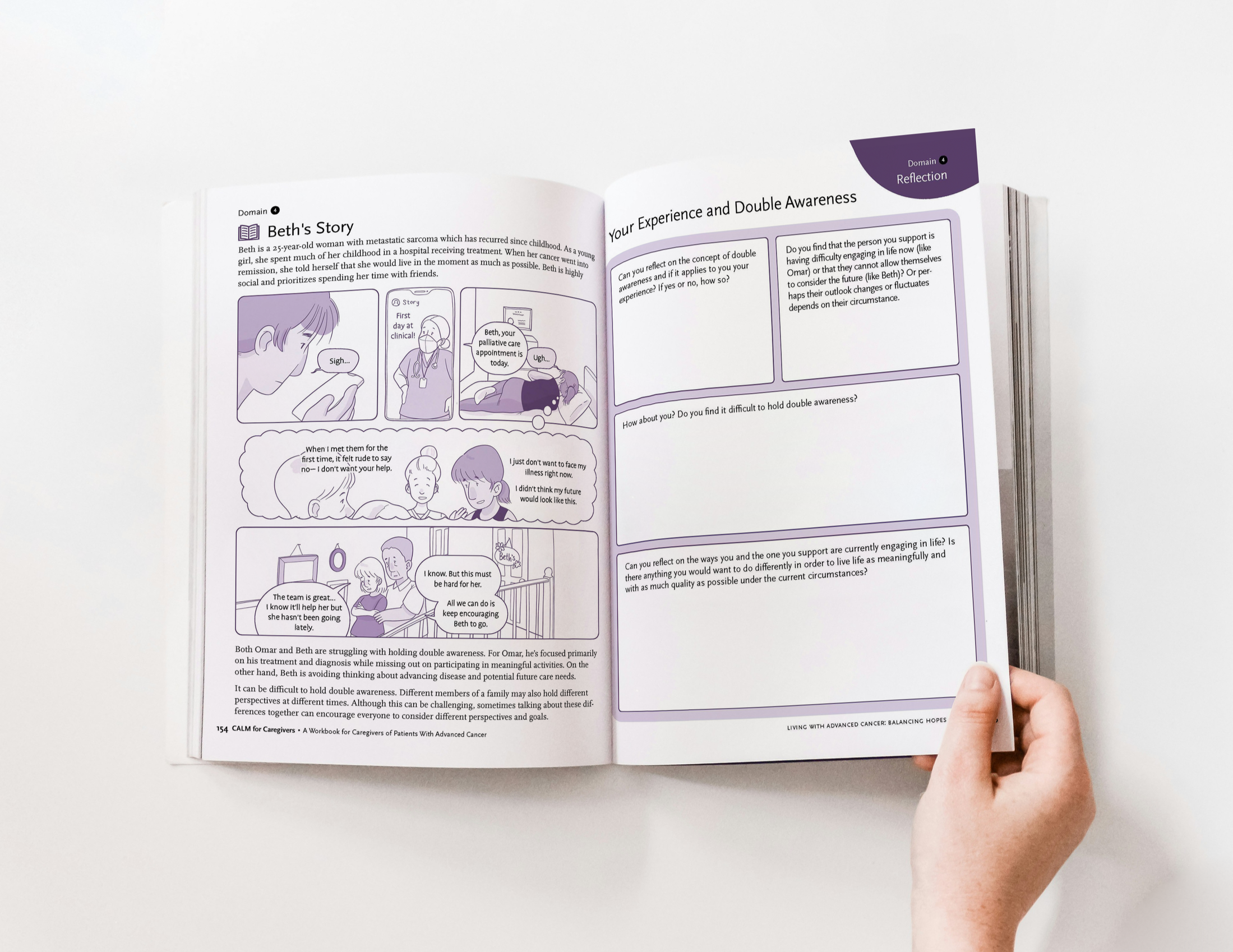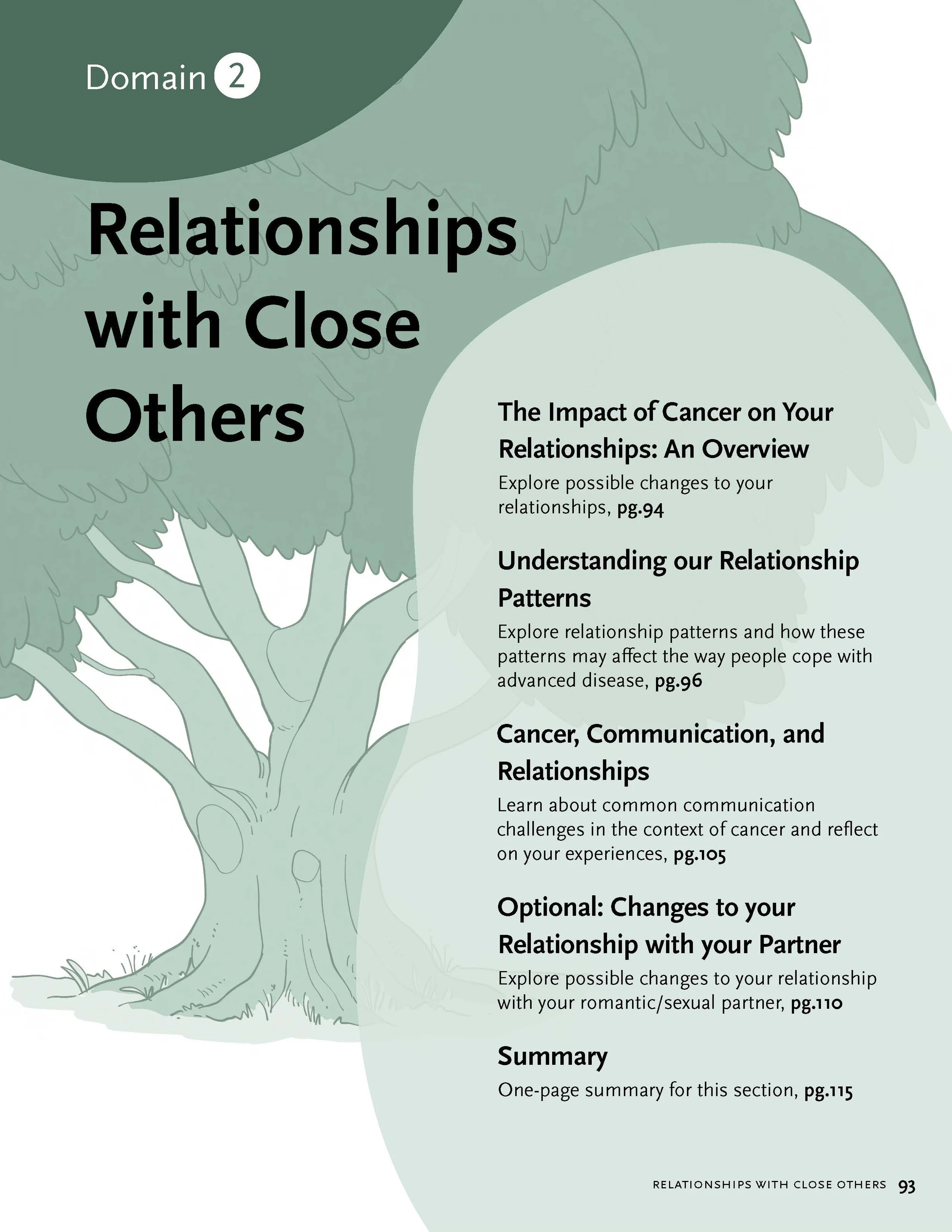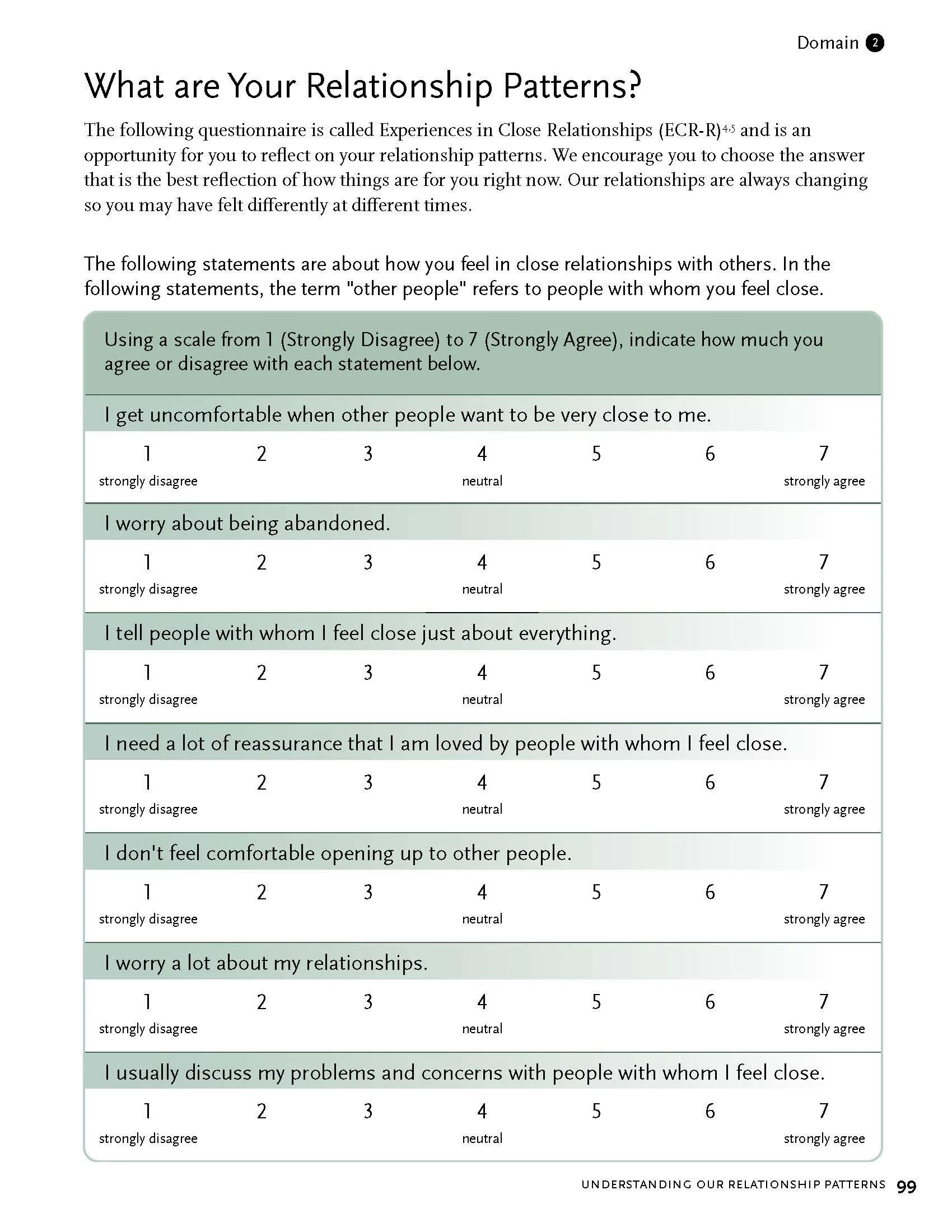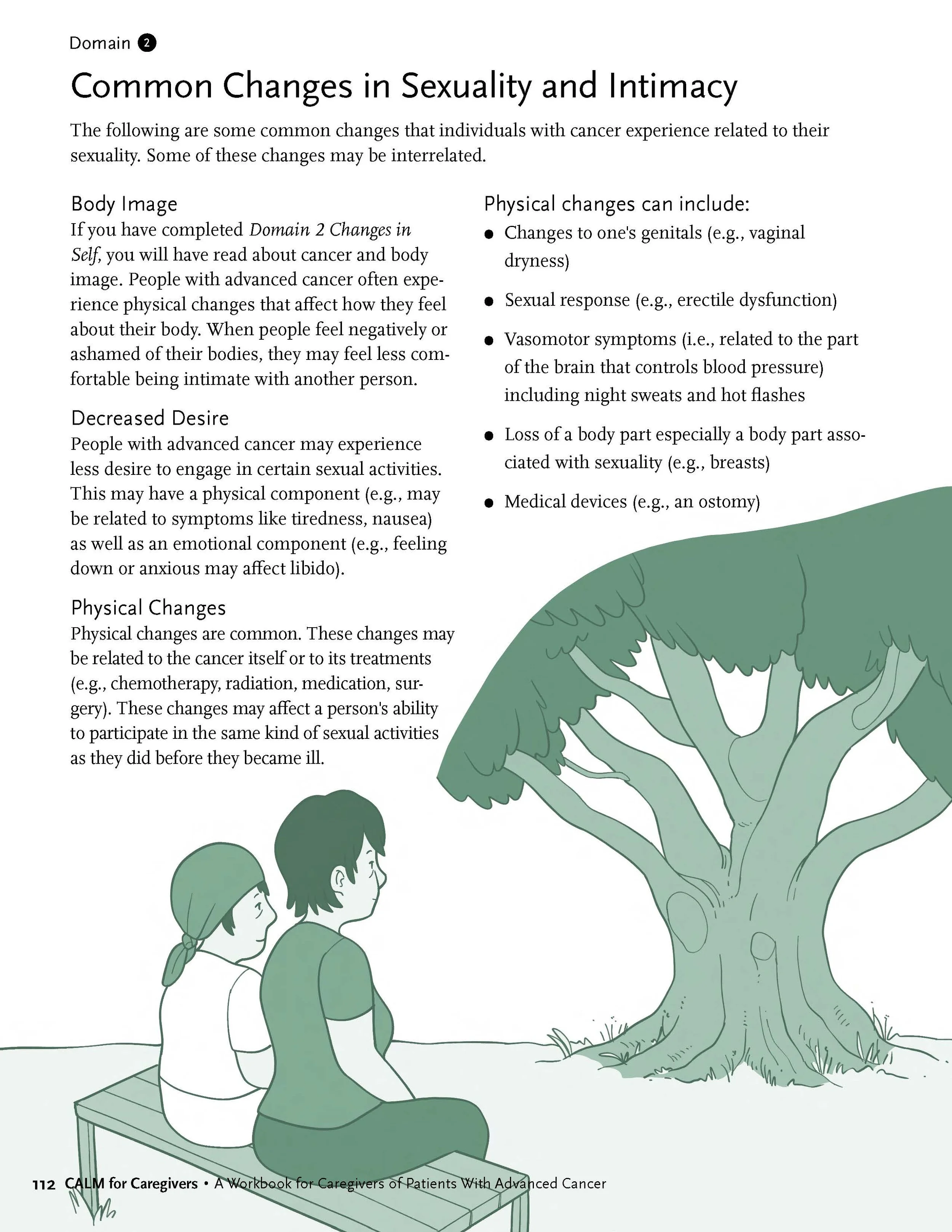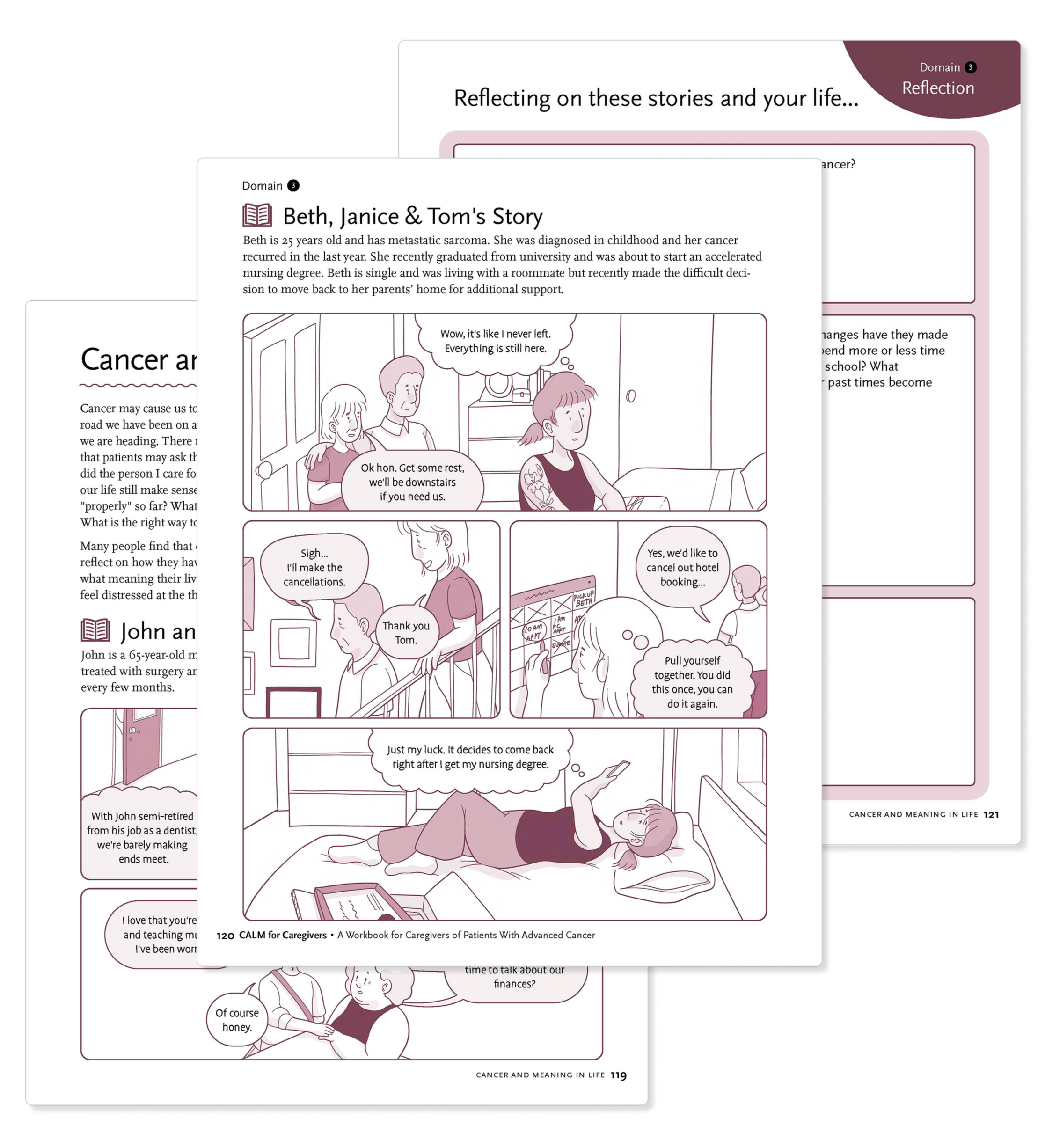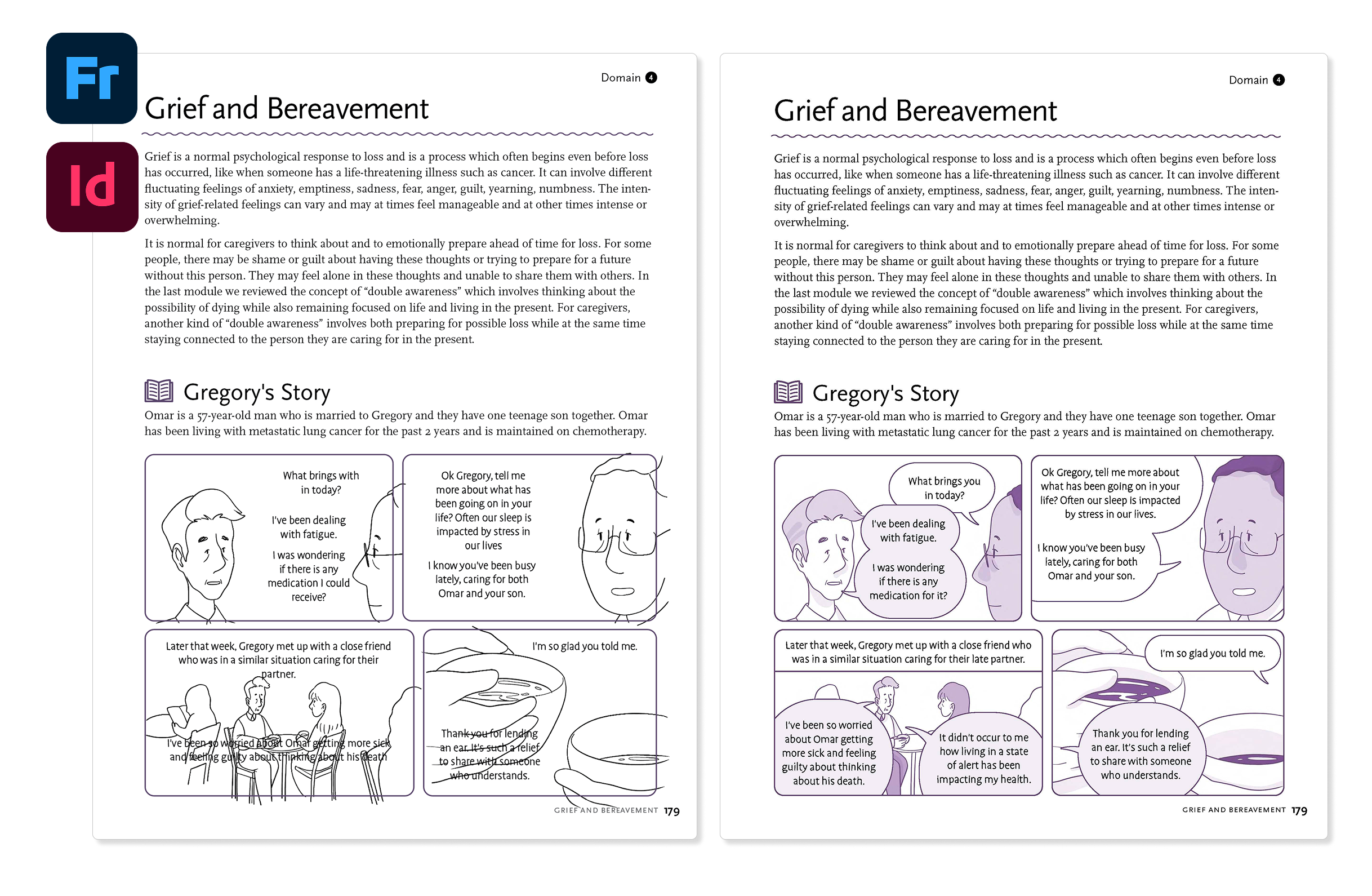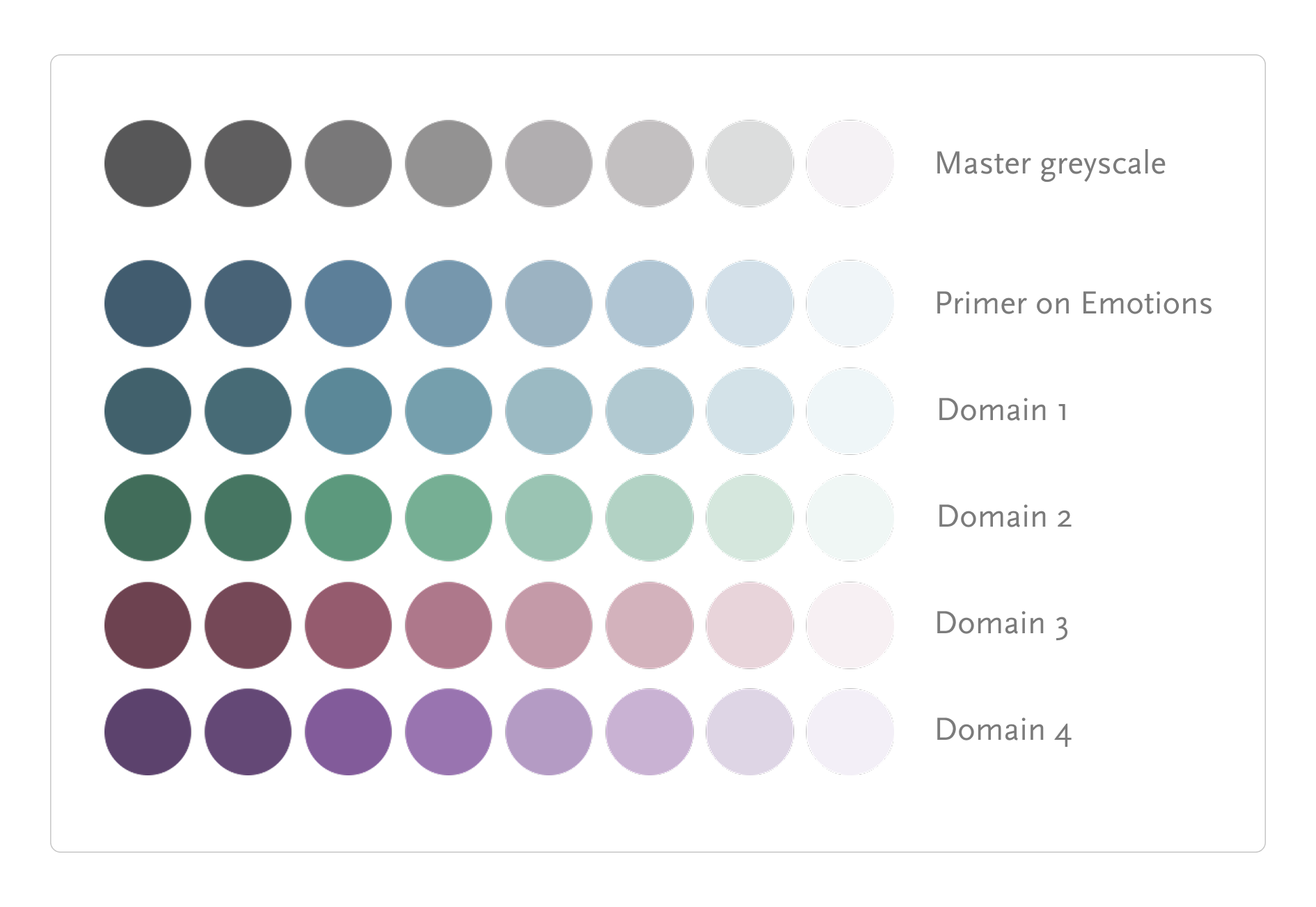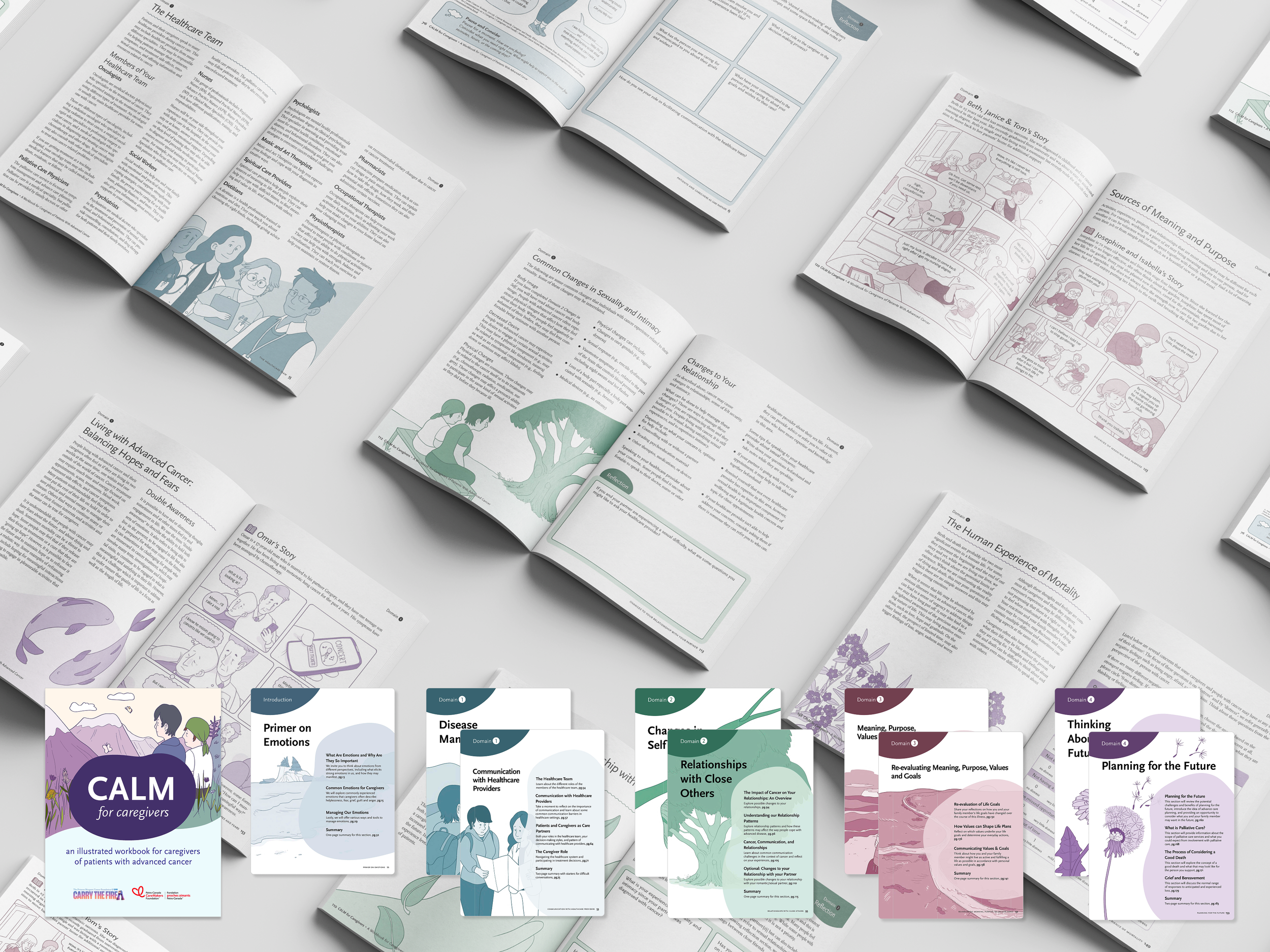
Overview
Terminal cancer is a pressing health issue that takes a huge emotional and mental toll on the patient. However, the impact of this diagnosis on patient caregivers is often overlooked. Many caregivers are family, friends or relatives who take on this role informally and unpaid. Caregivers experience levels of distress equal to or greater than patients, yet effective, evidence-based resources for caregivers of patients with advanced cancer remain scarce. They face unique emotional and mental challenges compared to those caring for patients with potentially curable cancer, such as anticipatory grief and feelings of shame and guilt.
You can now visit the UHN Caring for the Caregiver page to view the workbook!
CALM for Caregivers
Master’s Research Project
Clients
Rinat Nissim, PhD, C. Psych
Sarah Hales, MD, PhD, FRCPC
Karley Wulf, RN, MPH
Shelley Wall, AOCAD, MScBMC
Date
September 2025
Role
Illustrator & Book Designer
Format
Print and digital
Audience
Caregivers of patients with advanced cancer, targeting women 50+
Tools
Figma, Adobe (Fresco, Illustrator & InDesign) & Notion
Funding
Petro-Canada CareMakers Foundation
Proposed Solution
CALM for Caregivers is a graphic narrative-based workbook that will facilitate caregiver awareness, knowledge and confidence in themselves and their care.
This workbook includes text content and spot illustrations, caregiver stories, reflection worksheets and questionnaires.
Potential Contribution to Biocommunication
This project will further demonstrate the efficacy and credibility of graphic medicine in patient and caregiver education in hospitals for older adults. By increasing exposure to this format, we hope to contribute to the already growing field of graphic medicine. To date, this will be the first graphic narrative-based workbook designed specifically to support the needs of caregivers of patients with advanced cancer.
Workbook Features
Objectives
Transforming a script
The Managing Cancer and Living Meaningfully (CALM) team at Princess Margaret Caregiver Clinic from the Department of Supportive Care have created a written document called CALM for Caregivers: A Workbook for Caregivers of Patients with Advanced Cancer. We were tasked to reimagine the existing script by:
Creating effective and engaging illustrations and graphic narratives
Developing an intuitive workbook design that adapts with the caregiver
Empowering caregivers of patients with advanced cancer through thoughtful design and storytelling
Using formative feedback to optimize workbook effectiveness.
Why comics?
Comics have been proven to be effective in healthcare spaces, particularly for increasing engagement, comprehension, and content retention. When we can induce an emotional response to the content through visuals, it can increase empathy and acceptance of new ideas.
So what better way to do so, in a format accessible to caregivers than narrative based materials?
Design and Layout
An approachable and friendly illustration style was used to create the characters. Each character is diverse in size, ethnicity, sexuality and age.
Initial layout and mood boarding was done on Figma and FigJam.
Re-usable assets, like speech bubbles were created on Illustrator. A style guide was developed based on accessibility requirements for older caregivers.
Text to visual narrative
Here is my process to creating a comic.
The initial sketch and layout is created by incorporating elements from the text into the character dialogue, body language or as background props. This draft is sent off to content advisors via PowerPoint slides for easy feedback collection and viewing.
After revisions are made, the text and image placement is finalized on InDesign.
Comic is coloured and speech bubbles are added over the images.
Design Considerations
Each domain features an accent colour derived from a master greyscale palette, ensuring that illustrations retain strong contrast and clear visual hierarchy when printed or viewed in black and white, while maintaining overall cohesion throughout the workbook.
Colours and their pairings comply with WCAG standards.
Survey and Feedback Collection
An initial visual survey was conducted to understand what styles were preferred by the caregiver and patient engagement partners.
After the completion of the first draft, a qualitative survey was completed by a group of care partners to collect feedback on the content and illustrations.
They enjoyed the spot illustrations, especially ones with nature and scenic environments. The illustrations helped them feel relaxed and calm while parsing through the content.
Final product
CALM for Caregivers has been officially launched on the UHN Caring for the Caregiver page. Visit the website to view the entire workbook or each domain separately.
Future plans
Continuing to offer support if there are text edits/updates to be made in the workbook.
Incorporate additional PDF interactivity features for easier digital use. Currently, the table of contents are clickable and on Chrome and PDF viewers, readers can access the bookmarks side bar.

